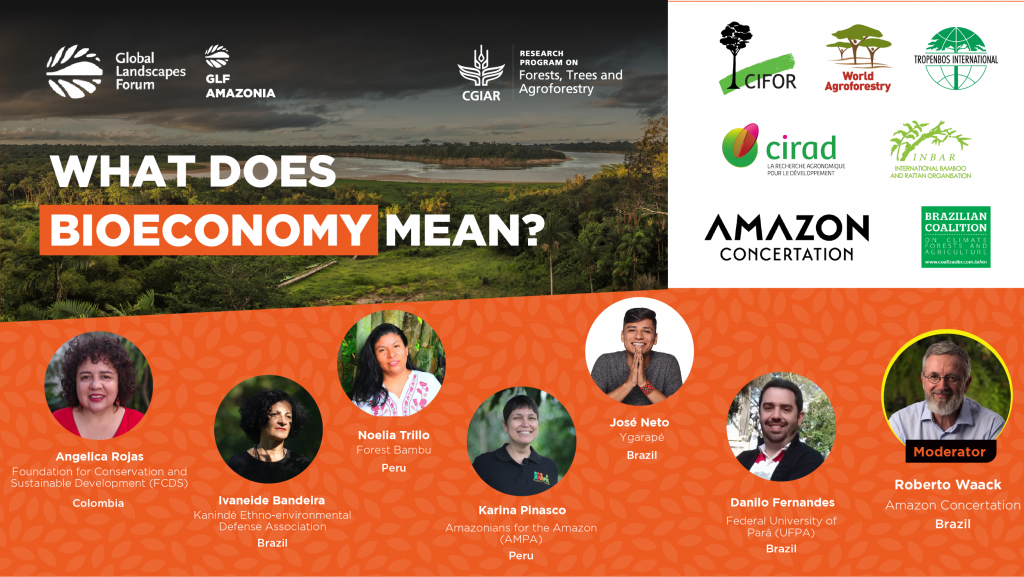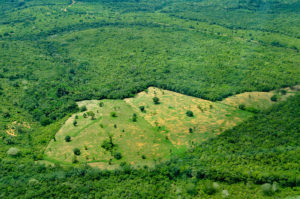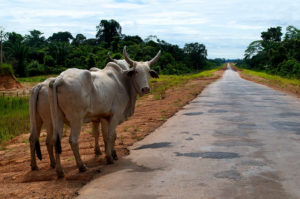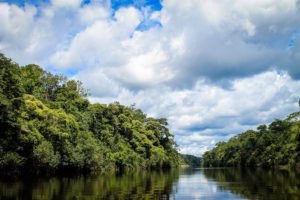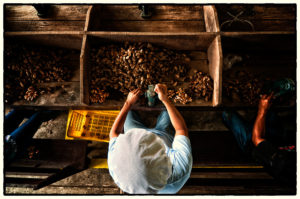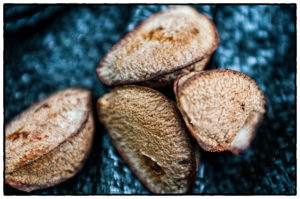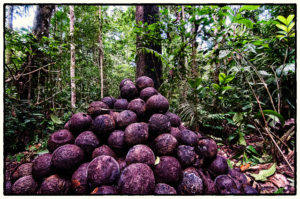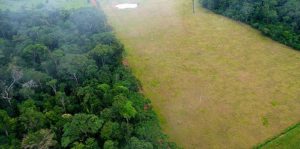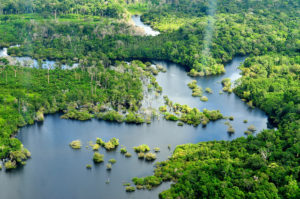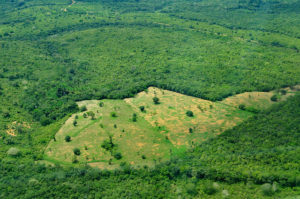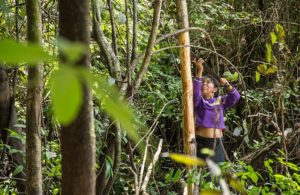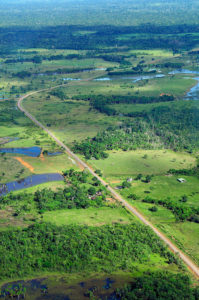The Forests, Trees and Agroforestry research program to support 4 sessions at GLF Amazonia
The Amazon region, one of the most diverse areas on earth culturally and biologically and where the world’s largest humid-tropical forest lies, is transitioning from being a carbon sink to a carbon emitter.
This is bad news for the entire planet.
Conserving the Amazon rainforests requires the involvement of people of all ages, civil society organizations, practitioners, researchers, policymakers, financial and private-sector representatives, activists, individuals and other local and global actors.
Together, these groups have an opportunity to preserve and restore the biological and cultural diversity of the Amazon by combining local and global knowledge and solutions. Inaction is risky and could lead to accelerated global warming, compromised access to food and water for local communities, the proliferation of zoonotic diseases, decreasing nutrient input from the Amazon River into the oceans, biodiversity loss and disrupted spiritual practices for millions of people.
To underline the importance of being active in the Amazon region, FTA helped organize four events at the GLF Amazonia:
- 21.09.21 – Farming with Trees: learning among Brazilian and Peruvian agroforestry farmers
- 22. 09.21 – The transition to deforestation-free family farming in the Amazon as a strategy to reduce deforestation: the case of Peru
- 22.09.21 – Facilitating spaces for women’s conservation organizations: Women’s solutions from the Amazon
- 23.09.21 – What does Bioeconomy mean?
This news focuses on the Bioeconomy event, but all 4 are available on YouTube and can be replayed (links below).
WHAT DOES ‘BIOECONOMY’ MEAN?
Is there in fact one “Amazonian” bioeconomy?
In one of the most engaging sessions at GLF Amazonia, over 270 attendees heard different stakeholder voices from across the Amazonian region. The purpose of the session was to confront the increasingly voiced concept of “bioeconomy” to local realities and needs. “Most people don’t know what a bioeconomy is,” said José Neto, an Indigenous youth from Ygarapé, Brazil. “This is because of lack of awareness. It is important to put this term in context.”
A circular bioeconomy is an economy powered by nature — it emphasizes the use of renewable natural capital and focuses on minimizing waste and replacing the wide range of non-renewable, fossil-based products currently in use. Circular bioeconomies offer the opportunity to transform our land, food, health, and industrial systems. In countries of the Global South where people depend on forests for their livelihoods, bioeconomies could make for more sustainable local landscapes and new income opportunities. FTA promotes forest-based bioeconomies, a subsector of the circular bioeconomy concept, which focuses on the transformation of our current system through the conscious use and re-use of forest materials.
In addition to the lack of awareness from stakeholders, different understandings of ‘bioeconomy’ exist. During the event, representatives from Indigenous communities, youth, entrepreneurs, academics and policymakers discussed the regional interpretations of ‘bioeconomy.’
“We organized this session to reflect on the question, “what is bioeconomy” and to try to understand the different perspectives of the region,” said session-moderator Roberto Waack, President of the Uma Concertação pela Amazônia, Coalizão Brasil Clima, Florestas e Agricultura.
The major challenge in these different understandings is synchronizing the implementation of pro-bioeconomy practices. “In the last 30 years we have advanced a lot in this field [bioeconomy], but we have never been good at balancing the environment and economy,” said Danilo Fernandes of the Núcleo de Altos Estudos Amazônicos (Naea) and Universidade Federal do Pará (UFPA). He further added that there are multiple factors to consider.
Local and Indigenous perspectives on national efforts to implement a bioeconomy were also shared during the session. Angélica Rojas of the Fundación Para La Conservación Y Desarrollo Sostenible (FCDS) los departamentos de Meta y Guaviare shared that, in Colombia, bioeconomy signifies “natural.” “[It means] there is an ability for the people to have and live from the products that are available from the different ecosystems.”
Meanwhile, in Peru, Karina Pinasco of the Amazónicos por Amazonía (AMPA) expressed the need to shift towards a “neutral country.” She said, “in 2020, we have deforested 4500 ha of land. Decision-makers are myopically focused on drug trafficking, land grabbing and corruption.” At the national level, bioeconomy is a potential tool to enhance the production of food and restore the environment while also providing income and livelihoods. Achieving bioeconomy targets could eventually help solve the persistent issues of deforestation.
The event’s panelists also raised the need to have a reality-check and to put bioeconomy in the context of social injustices and denial of human rights in the Amazon. “How do we talk about bioeconomy and deforestation when there are pressing issues about human rights — when Indigenous peoples and activists are killed?” asked Ivaneide Bandeira Cardozo of the Kanindé Ethno-environmental Defense Association.
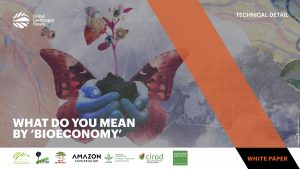
The differing perspectives on bioeconomy show that there is no use in trying to force an all-encompassing “Amazonian bioeconomy” concept; locally-designed bioeconomy approaches differ from place-to-place, even though the principles remain the same globally. To address conflicting views and misunderstandings on the concept of bioeconomy, ongoing initiatives in the Amazon are converging towards common frameworks. These frameworks and other issues are developed in the session’s White Paper.
What is clear is that, without compromising human rights and social justice, there is a huge opportunity for bioeconomy approaches to address the pressing environmental challenges. Context-specific bioeconomies could create new value chains using forest-based products and services that generate more local profit — a win-win situation, if properly implemented.
What are the most effective paths to promote socioenvironmental development in the Amazon?
How do we ensure “bioeconomy” is more than just another fashionable idea? Following the theme of GLF Amazonia, this session discussed the issue from the inside out. Bioeconomy negotiations need to be diverse and encourage meaningful participation “We need to have a more participative discussion. It should be multi-level, multi-actor,” said Pinasco.
Some of the most important actors for a successful bioeconomy are Indigenous peoples. Respecting on-the-ground, local and traditional worldviews was the loudest call-to-action from this session: “We need to value the Indigenous views. We need to rethink how we move forward with bioeconomy so as not to neglect the voices of the Amazonians,” said Neto.
Developing an economic model that respects the integrity and decisions of Indigenous communities is the most pressing challenge to advance bioeconomy approaches in the Amazon. “We cannot just focus on monetary benefits,” said Cardozo. “It is against Indigenous values. There should be a certain degree of respect for nature.”
Integrating Indigenous and local voices in decision-making processes is key for capacity development. When local organizations and institutions are strengthened, they could help communities better manage their territories. “We need to develop skills and materials that could help us in providing mature and informed decisions in relation to the value chains that are developed,” said Pinasco.
Tapping into the potentials of alternative forest resources, such as bamboo, was also raised by Noelia Trillo, CEO of Forest Bambu. “We see bamboo has a possibility of recovering soil to address the degraded lands in the Amazon. It gives us a number of alternative resources.”
“A bioeconomy should consider social and environmental factors while respecting Indigenous and local perspectives,” Trillo added.
Replay the full session –>
FTA’s other 3 sessions also can be replayed here below!
FARMING WITH TREES: LEARNING AMONG BRAZILIAN AND PERUVIAN FARMERS
Drawing from farmers’ experience on practical solutions to sustainable farming that can be scaled up, this session brought farmers’ cooperatives and NGOs from Brazil and Peru and discussed their learning on how to continue farming and making money while also restoring ecosystem functions and enhancing biodiversity on degraded lands.
FTA and its partners are strong proponents of agroecological approaches that support food production, restoration and climate change adaptation. Agroforestry, dubbed as “agroecology on steroids” by principal scientist Fergus Sinclair – paved the way to more recent involvement, for the upscale of agroecology – has enormous potential as a nature-based solution for sustainable land management. This is true, not only in the Amazon, but in most parts of the world. FTA scientists also believe that these initiatives would only become successful if stakeholders are meaningfully participating.
In this session, solutions and practices that reconcile social and environmental goals and factors for their success and challenges in implementation were presented by the Brazilian and Peruvian agroforestry farmers themselves.
Replay the full session –>
THE TRANSITION TO DEFORESTATION-FREE FAMILY FARMING IN THE AMAZON AS A STRATEGY TO REDUCE DEFORESTATION: THE CASE OF PERU
The transition towards Zero Deforestation farming has been a huge undertaking. In this session, actors both from the farm-level and at the policy-level were able to share challenges and opportunities of deforestation-free import regulations to reduce deforestation in regions where commodities are produced by smallholder farmers, such as coffee and cocoa in Peru. This session explored how to minimize the risk that commodities associated with forest loss enter EU’s market and how, from companies to government and farmers, actors along the value chain are planning to meet compliance to regulations, the challenge, and the risks.
The session also solicited thoughts from farmers and practitioners in identifying strategic elements of the policy and institutional context to support the process at scale. It examined priorities to generate those conditions and progresses so far. One issue discussed is how regulatory mechanisms, depending on the implementation, can be both enabling and impeding the success and scaling up of agroforestry practices.
Replay the full session –>
FACILITATING SPACES FOR GENDER RESPONSIVE CONSERVATION: WOMEN’S SOLUTIONS FROM THE AMAZON
Women are integral in the success of Amazonian conservation. Here, the session reported preliminary lessons learned from gender inclusive initiatives that have increased women’s participation in conservation and development in the Brazilian, Colombian and Peruvian Amazon. These cases cover a diverse collection of indigenous, Afro-descendant and peasant women from across the region. The hour and a half-long session facilitated a discussion of findings from multiple grassroots efforts where women increased participation in natural resource decision-making, gained more secure access to natural resources, or improved benefits from natural resource management.
The women in the Amazon are diverse in terms of settlements, age, class, ethnic background, descent, etc. Most of the women also take forest and land-based roles in the community and are holders of traditional knowledge. In spite of their diverse backgrounds, they often face the same challenges of political barriers, cultural and social bias, lack of capacity and resources, lack of trust and lack of collective awareness, and lack of sources of loans, education, and affirmative action.
Replay the full session –>
This article was written by Maria Paula Sarigumba.
This article was produced by the CGIAR Research Program on Forests, Trees and Agroforestry (FTA). FTA is the world’s largest research for development program to enhance the role of forests, trees and agroforestry in sustainable development and food security and to address climate change. CIFOR leads FTA in partnership with ICRAF, the Alliance of Bioversity International and CIAT, CATIE, CIRAD, INBAR and TBI. FTA’s work is supported by the CGIAR Trust Fund.

